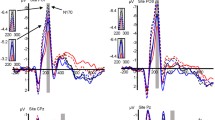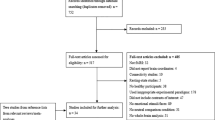Abstract
Processing of emotions has been an enduring topic of interest in neuroimaging research, but studies have mostly used facial emotional stimuli. The aim of this study was to determine neural networks involved in emotion processing using scenic emotional visual stimuli. One hundred and twenty photographs from the International Affective Picture System (IAPS), including ecological scenes of disgust, fear, happiness, and sadness, were presented to 40 healthy participants while they underwent functional magnetic imaging resonance (fMRI). Afterwards they evaluated the emotional content of the pictures in an offline task. The occipito-temporal cortex and the amygdala–hippocampal complex showed a non-specific emotion-related activation, which was more marked in response to negative emotions than to happiness. The temporo-parietal cortex and the ventral anterior cingulate gyrus showed deactivation, with the former being marked for all emotions except fear and the latter being most marked for disgust. The fusiform gyrus showed activation in response to disgust and deactivation in response to happiness or sadness. Brain regions involved in processing of scenic emotion therefore resemble those reported for facial expressions of emotion in that they respond to a range of different emotions, although there appears to be specificity in the intensity and direction of the response.



Similar content being viewed by others
References
Adolphs R, Tranel D, Damasio H, Damasio AR (1995) Fear and the human amygdala. J Neurosci 15(9):5879–5891
Bar M, Neta M (2007) Visual elements of subjective preference modulate amygdala activation. Neuropsychol 45:2191–2200
Beckmann C, Jenkinson M, Smith SM (2003) General multi-level linear modelling for group analysis in FMRI. Neuroimage 20:1052–1063
Breiter HC, Etcoff NL, Whalen PJ, Kennedy WA, Rauch SL, Buckner RL, Strauss MM, Hyman SE, Rosen BR (1996) Response and habituation of the human amygdala during visual processing of facial expression. Neuron 17(5):875–887
Britton JC, Taylor SF, Sudheimer KD, Liberzon I (2006) Facial expressions and complex IAPS pictures: common and differential networks. Neuroimage 31(2):906–919
Buckner RL, Andrews-Hanna JR, Schacter DL (2008) The brain’s default network: anatomy, function, and relevance to disease. Ann N Y Acad Sci 1124:1–38. doi:10.1196/annals.1440.011
Calder AJ, Young AW (2005) Understanding the recognition of facial identity and facial expression. Nat Rev Neurosci 6(8):641–651. doi:10.1038/nrn1724
Cox D, Meyers E, Sinha P (2004) Contextually evoked object-specific responses in human visual cortex. Science 304(5667):115–117. doi:10.1126/science.1093110304/5667/115
Crouzet SM, Thorpe SJ (2011) Low-level cues and ultra-fast face detection. Front Psychol 2:342. doi:10.3389/fpsyg.2011.00342
Crouzet SM, Kirchner H, Thorpe SJ (2010) Fast saccades toward faces: face detection in just 100 ms. J Vis 10 (4):16 11–17. doi:10.1167/10.4.16
Dalton KM, Nacewicz BM, Johnstone T, Schaefer HS, Gernsbacher MA, Goldsmith HH, Alexander AL, Davidson RJ (2005) Gaze fixation and the neural circuitry of face processing in autism. Nat Neurosci 8(4):519–526
Davis M, Whalen PJ (2001) The amygdala: vigilance and emotion. Mol Psychiatry 6(1):13–34
Ellis AW, Young AW (1988) Human cognitive neuropsychology. Erlbaum, Hove
Emery NJ, Amaral DG, Lane RD, Nadel L (2000) The role of the amygdala in primate social cognition. Cognitive neuroscience of emotion. Oxford University Press, New York, pp 156–191
Fusar-Poli P, Placentino A, Carletti F, Landi P, Allen P, Surguladze S, Benedetti F, Abbamonte M, Gasparotti R, Barale F, Perez J, McGuire P, Politi P (2009) Functional atlas of emotional faces processing: a voxel-based meta-analysis of 105 functional magnetic resonance imaging studies. J Psychiatry Neurosci 34(6):418–432
Gusnard DA, Raichle ME (2001) Searching for a baseline: functional imaging and the resting human brain. Nat Rev Neurosci 2(10):685–694. doi:10.1038/3509450035094500
Hariri AR, Mattay VS, Tessitore A, Fera F, Weinberger DR (2003) Neocortical modulation of the amygdala response to fearful stimuli. Biol Psychiatry 53(6):494–501. pii: S0006322302017869
Kanwisher N, McDermott J, Chun MM (1997) The fusiform face area: a module in human extrastriate cortex specialized for face perception. J Neurosci 17(11):4302–4311
Knapska E, Nikolaev E, Boguszewski P, Walasek G, Blaszczyk J, Kaczmarek L, Werka T (2006) Between-subject transfer of emotional information evokes specific pattern of amygdala activation. Proc Natl Acad Sci USA 103(10):3858–3862. doi:10.1073/pnas.0511302103
Lang PJ, Bradley MM, Cuthbert BN (eds) (1997) International Affective Picture System (IAPS): technical manual and affective ratings. NIMH Center for the Study of Emotion and Attention. University of Florida, Gainesville
Lee E, Kang JI, Park IH, Kim JJ, An SK (2008) Is a neutral face really evaluated as being emotionally neutral? Psychiatry Res 157(1–3):77–85
Mitterschiffthaler MT, Fu CH, Dalton JA, Andrew CM, Williams SC (2007) A functional MRI study of happy and sad affective states induced by classical music. Hum Brain Mapp 28(11):1150–1162. doi:10.1002/hbm.20337
Nasr S, Liu N, Devaney KJ, Yue X, Rajimehr R, Ungerleider LG, Tootell RB (2011) Scene-selective cortical regions in human and nonhuman primates. J Neurosci 31(39):13771–13785. doi:10.1523/JNEUROSCI.2792-11.2011
Radua J, Phillips ML, Russell T, Lawrence N, Marshall N, Kalidindi S, El-Hage W, McDonald C, Giampietro V, Brammer MJ, David AS, Surguladze SA (2010) Neural response to specific components of fearful faces in healthy and schizophrenic adults. Neuroimage 49(1):939–946
Rahko J, Paakki JJ, Starck T, Nikkinen J, Remes J, Hurtig T, Kuusikko-Gauffin S, Mattila ML, Jussila K, Jansson-Verkasalo E, Katsyri J, Sams M, Pauls D, Ebeling H, Moilanen I, Tervonen O, Kiviniemi V (2010) Functional mapping of dynamic happy and fearful facial expression processing in adolescents. Brain Imaging Behav 4(2):164–176. doi:10.1007/s11682-010-9096-x
Smith SM, Jenkinson M, Woolrich MW, Beckmann CF, Behrens TE, Johansen-Berg H, Bannister PR, De Luca M, Drobnjak I, Flitney DE, Niazy RK, Saunders J, Vickers J, Zhang Y, De Stefano N, Brady JM, Matthews PM (2004) Advances in functional and structural MR image analysis and implementation as FSL. Neuroimage 23(Suppl 1):S208–S219. doi:10.1016/j.neuroimage.2004.07.051
Surguladze SA, Radua J, El-Hage W, Gohier B, Sato J, Kronhaus D, Proitsi P, Powel J, Phillips ML (2012) Interaction of catechol O-methyltransferase and serotonin transporter genes modulates effective connectivity in a facial emotion processing circuitry. Transl Psychiatry 2:e70
Tettamanti M, Rognoni E, Cafiero R, Costa T, Galati D, Perani D (2012) Distinct pathways of neural coupling for different basic emotions. Neuroimage 59(2):1804–1817. doi:10.1016/j.neuroimage.2011.08.018
Wang L, McCarthy G, Song AW, Labar KS (2005) Amygdala activation to sad pictures during high-field (4 tesla) functional magnetic resonance imaging. Emotion 5(1):12–22. doi:10.1037/1528-3542.5.1.12
Whalen PJ (2007) The uncertainty of it all. Trends Cogn Sci 11:499–500
Whalen PJ, Kagan J, Cook RG, Davis FC, Kim H, Polis S, McLaren DG, Somerville LH, McLean AA, Maxwell JS, Johnstone T (2004) Human amygdala responsivity to masked fearful eye whites. Science 306(5704):2061
Winston JS, O’Doherty J, Dolan RJ (2003) Common and distinct neural responses during direct and incidental processing of multiple facial emotions. Neuroimage 20(1):84–97 pii: S1053811903003033
Wright P, He G, Shapira NA, Goodman WK, Liu Y (2004) Disgust and the insula: fMRI responses to pictures of mutilation and contamination. NeuroReport 15(15):2347–2351. pii: 00001756-200410250-00009
Acknowledgments
This work was supported by the Centro de Investigación Biomédica en Red de Salud Mental (CIBERSAM), the Catalonian Government (2009SGR211 to the Research Unit of Benito Menni) and the Instituto de Salud Carlos III (Río Hortega research contract to Dr. Radua (CM11/00024); Miguel Servet research contracts to Drs. Salvador (CP07/00048) and Pomarol-Clotet (CP10/00596); Intensification grant to Dr. Sarró (10/231); and Research Projects to Drs. Pomarol-Clotet (PI10/01058) and Salvador (PI05/1874)).
Conflict of interest
The authors declare no conflict of interest in relation to the present manuscript.
Author information
Authors and Affiliations
Corresponding author
Appendix
Appendix
Pictures of the International Affective Picture System (IAPS) used in the fMRI task:
Disgust: 1111, 1280, 1945, 2720, 7359, 7361, 7380, 9008, 9140, 9290, 9300, 9301, 9320, 9330, 9342, 9373, 9500, 9570, 9571 and 9830.
Fear: 1052, 1300, 1301, 1303, 1525, 1726, 1932, 2811, 5940, 6211, 6230, 6244, 6260, 6300, 6370, 6510, 6825, 7640, 9600 and 9620.
Happiness: 1340, 1441, 1463, 1811, 2154, 2216, 2332, 2345, 2391, 5201, 5551, 5600, 5760, 5811, 5831, 5833, 8170, 8190, 8496 and 8540.
Sadness: 2053, 2141, 2205, 2312, 2455, 2520, 2590, 2700, 2703, 2718, 2750, 2799, 3220, 3230, 3300, 3350, 9220, 9415, 9421 and 9435.
Neutral scenes: 2383, 2393, 2575, 5471, 5520, 5534, 5535, 6150, 7002, 7004, 7009, 7010, 7025, 7035, 7036, 7037, 7041, 7050, 7059, 7080, 7100, 7130, 7140, 7161, 7175, 7186, 7205, 7211, 7217, 7224, 7233, 7235, 7491, 7495, 7500, 7503, 7510, 7595, 7950 and 2745.1.
Rights and permissions
About this article
Cite this article
Radua, J., Sarró, S., Vigo, T. et al. Common and specific brain responses to scenic emotional stimuli. Brain Struct Funct 219, 1463–1472 (2014). https://doi.org/10.1007/s00429-013-0580-0
Received:
Accepted:
Published:
Issue Date:
DOI: https://doi.org/10.1007/s00429-013-0580-0




